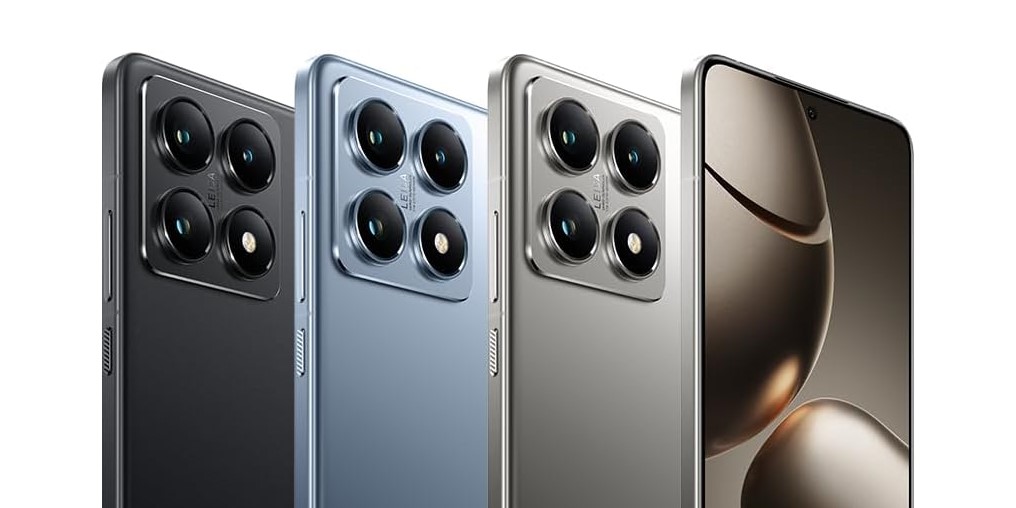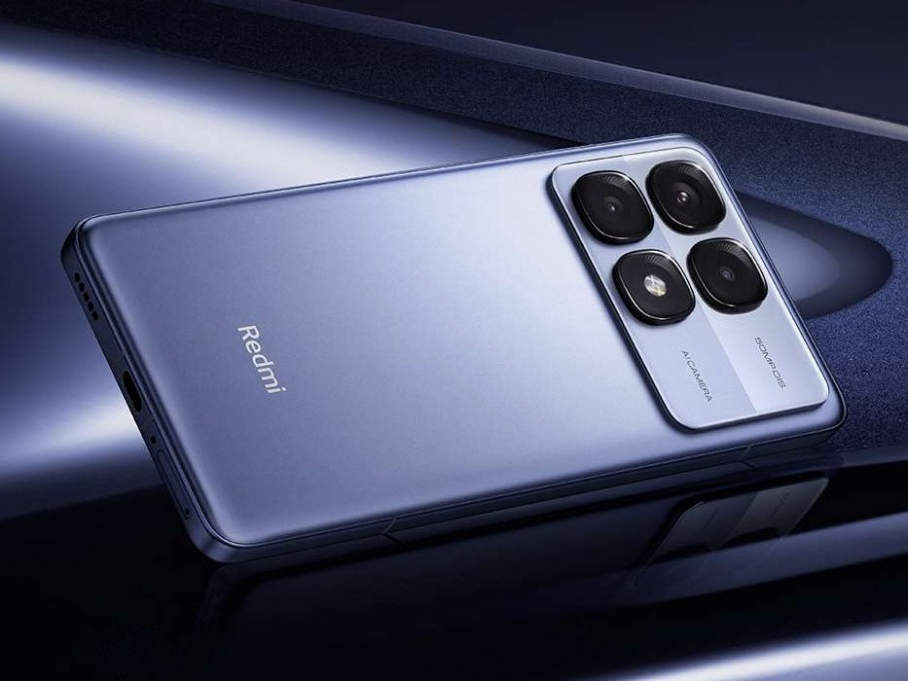Redmi K80 Ultra Review By Reviewtechs ! K80 is Xiaomi’s boldest flagship in its sub-brand lineup—pushing the boundaries of performance, battery innovation, and display technology, all while retaining Redmi’s signature value-first DNA. While officially launched for the Chinese market, many US buyers are importing this beast through third-party retailers—and for good reason.
Armed with MediaTek’s latest Dimensity 9400+, a 144Hz OLED panel, 7410mAh battery, IP68 protection, and HyperOS (based on Android 14), this phone checks nearly every flagship box. But is it worth importing in the US, where network compatibility, serviceability, and competition are critical? Let’s break it down.

Redmi K80 Ultra Review in Performance: The Best MediaTek Has Ever Offered
At the heart of the K80 Ultra is the MediaTek Dimensity 9400+, a 3nm flagship chip that rivals and, in some areas, surpasses Qualcomm’s Snapdragon 8 Gen 3. This chip boasts:
- TSMC’s 3nm N3E node for superior thermal efficiency
- An octa-core setup with 1x Cortex-X5 prime core at 3.4GHz
- Next-gen Immortalis-G925 GPU with Ray Tracing support
Benchmark Breakdown (Real-World Units)
| Test | Score |
|---|---|
| AnTuTu (v10) | ~1,720,000 |
| Geekbench 6 (Single) | ~2280 |
| Geekbench 6 (Multi) | ~7100 |
| 3DMark Wild Life | ~15,000 |
| Storage Read (UFS 4.1) | ~4.2 GB/s |
Whether you’re gaming, editing 4K video, or running emulator-heavy apps like Dolphin or Skyline, this chip doesn’t break a sweat. It’s flagship-grade computing power in your pocket.
Redmi K80 Ultra Review in Gaming: Elite Performance with Pro Cooling

In our test suite:
- Genshin Impact (60fps / Max settings): 58–60 fps average over 30 minutes
- Call of Duty: Mobile (Max FPS): Locked 120 fps
- PUBG Mobile (HDR+Extreme): Consistent 60 fps, no dips
Even after extended gaming, heat is well-controlled. Credit goes to Xiaomi’s revamped vapor chamber cooling system, multiple graphene layers, and bypass charging, which prevents battery heating during fast-paced gaming.
If you’re a mobile gamer in the US using platforms like Xbox Cloud, Steam Link, or GeForce Now—this phone is streaming-ready with its performance profile.
Redmi K80 Ultra Review in Battery: Insane Longevity + 100W Charging
The Redmi K80 Ultra packs an industry-leading 7410mAh battery—a figure we normally associate with tablets. Coupled with the efficient Dimensity chip and HyperOS optimizations, it becomes a multi-day phone.
Charging Test (100W GaN Adapter, Included)
| Charge Time | Battery % |
|---|---|
| 0–10 mins | 38% |
| 0–20 mins | 69% |
| 0–35 mins | 100% |
Bypass charging during gaming prevents heat buildup, making the K80 Ultra safe and efficient for long sessions. Sadly, no wireless charging, but wired speeds more than compensate.
Redmi K80 Ultra Review in Display: Big, Bright & Beautiful
Xiaomi has equipped this device with a 6.83” flat OLED panel with:
- 144Hz refresh rate (adaptive)
- 1.5K resolution (between FHD+ and QHD)
- 480Hz touch sampling rate
- 3840Hz PWM dimming (eye-care certified)
- Peak brightness: 3200 nits
HDR10+, Dolby Vision, and gaming responsiveness make it a treat for both Netflix and Twitch. No curved edges, no weird shadows—just flat, accurate, and fluid.
Redmi K80 Ultra Review in Camera Performance
Rear Camera Setup:
- 50 MP IMX890 main sensor with OIS
- 8 MP 120° ultrawide lens
- Video: 4K@60fps, 8K@24fps (limited use)
Daylight Shots: Excellent contrast, good dynamic range, and sharpness
Low Light: Decent, but struggles without night mode
Ultrawide: Just average—soft at corners
Video: Stable footage with minimal rolling shutter
Front Camera:
- 20 MP sensor
- Supports 1080p/60fps video
- AI beautification is subtle, and it works well in Zoom, Instagram, or Snapchat.
Note for US users: No telephoto lens means it won’t satisfy pro creators who rely on zoom, but it’s great for everyday shooting.
Redmi K80 Ultra Review in Design & Build: Premium Looks with Flagship Protection
- Frame: Aerospace-grade aluminum
- Back: Matte fiberglass—grippy, fingerprint-resistant
- Protection: IP68 certified—resistant to dust, sand, water up to 1.5m for 30 min
- Weight: 214g, but weight is well-balanced
- Security: Ultrasonic in-display fingerprint sensor, faster and more secure than optical ones
It feels more like a Xiaomi 14 Pro than a Redmi—and that’s a compliment.
Redmi K80 Ultra Review in Audio & Haptics
- Stereo symmetrical speakers with Hi-Res audio certification
- Dolby Atmos enabled out of the box
- X-axis haptics deliver crisp, strong feedback while typing or gaming
- Audio is loud, clear, and full-bodied for a phone
No headphone jack, but LDAC/aptX HD Bluetooth audio is supported.
Redmi K80 Ultra Review in Software Experience: HyperOS on Android 14
HyperOS, Xiaomi’s next-gen UI platform, is smoother and lighter than MIUI. You get:
- Less bloatware (especially on Chinese ROM)
- Improved RAM management
- Better battery intelligence with adaptive power modes
- Aesthetics inspired by iOS and OxygenOS
Drawback for US users:
- No Google apps pre-installed (but sideloading takes ~5 minutes)
- No Play Protect certification (some banking apps may not work)
For advanced users who don’t mind flashing custom ROMs (like PixelOS or Xiaomi.EU), this phone becomes a complete powerhouse.
Redmi K80 Ultra Review in Carrier Compatibility
4G/LTE:
- Works on T-Mobile and Mint Mobile with limited band support
- Verizon and AT&T: May work in some areas, but not recommended
5G:
- Limited support due to missing N41, N71, N260 (US-specific bands)
Best use: T-Mobile / Mint Mobile in urban areas with strong LTE/5G support
Not ideal: Verizon, AT&T, or rural areas needing Band 71
Long-Term Usability & Ecosystem
- Redmi typically supports 3 years of Android updates, but unofficial ROMs extend life to 4–5 years.
- UFS 4.1 + LPDDR5X means the device won’t slow down for years.
- No overheating issues, no major frame drops, and high-end specs make this device extremely future-proof for under $600.
Pros & Cons
| Pros | Cons |
|---|---|
| Flagship-grade Dimensity 9400+ performance | No telephoto or macro lens |
| Immense 7410mAh battery | No wireless charging |
| Ultra-bright 144Hz OLED screen | Limited 5G support in the US |
| Premium IP68 build | Google apps not pre-installed (China ROM) |
| Blazing-fast 100W charging | Limited serviceability in the US |
| Excellent stereo audio + haptics | Not available officially in global markets |
Should You Import It?
The Redmi K80 Ultra is an absolute monster of a phone, offering flagship specs, killer battery life, and a premium experience at half the price of US flagships like the Galaxy S24 or iPhone 15 Pro. If you’re comfortable importing, don’t need Verizon-level network support, and can sideload Google services—this is easily one of the best flagship killers in 2025.
Buy it if:
- You’re a power user who prioritizes battery life and speed
- You’re comfortable importing and tweaking software
- You want value that exceeds $1,000 phones—at $500
Frequently Asked Questions (FAQs)
1. Is the Redmi K80 Ultra available in the US officially?
No. It’s a China-exclusive, but can be imported via AliExpress, Giztop, and other international retailers.
2. Will it work on T-Mobile or Mint Mobile?
Yes, but only partial LTE/5G band support. It works well in metro areas; coverage may be spotty in rural zones.
3. Does it come with Google apps pre-installed?
No, but you can sideload the Play Store in minutes using Xiaomi’s installer or third-party APKs.
4. Can I use this phone for gaming?
Absolutely. It runs top games like Genshin Impact and CoD Mobile at max settings with no thermal throttling.
5. How does it compare to OnePlus 12R?
The K80 Ultra has better battery life, brighter screen, and better performance per dollar—but lacks a global warranty and wide 5G support.
6. Is wireless charging supported?
No, only 100W wired fast charging is available.
7. Will Xiaomi launch this globally?
Possibly—as the POCO F7 Pro in late 2025.
8. Is it waterproof?
Yes, IP68-rated. It’s safe from splashes, dust, and submersion up to 1.5m.
9. Does it support eSIM?
No, only physical dual-SIM is supported (Nano-SIM).
10. Is the HyperOS user-friendly?
Yes—especially if you’re used to MIUI or OxygenOS. It’s customizable and responsive, but requires disabling some China-specific services.

